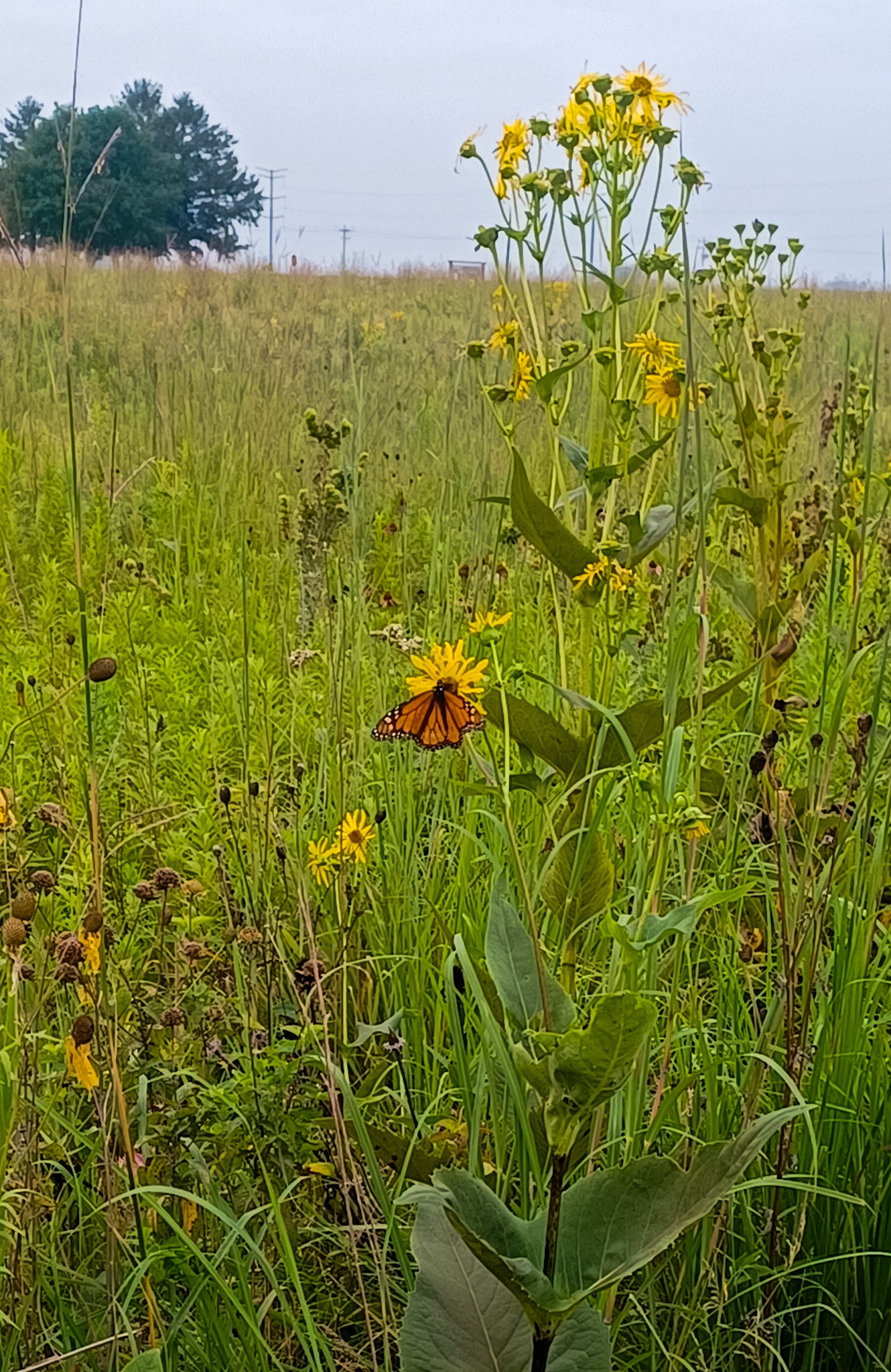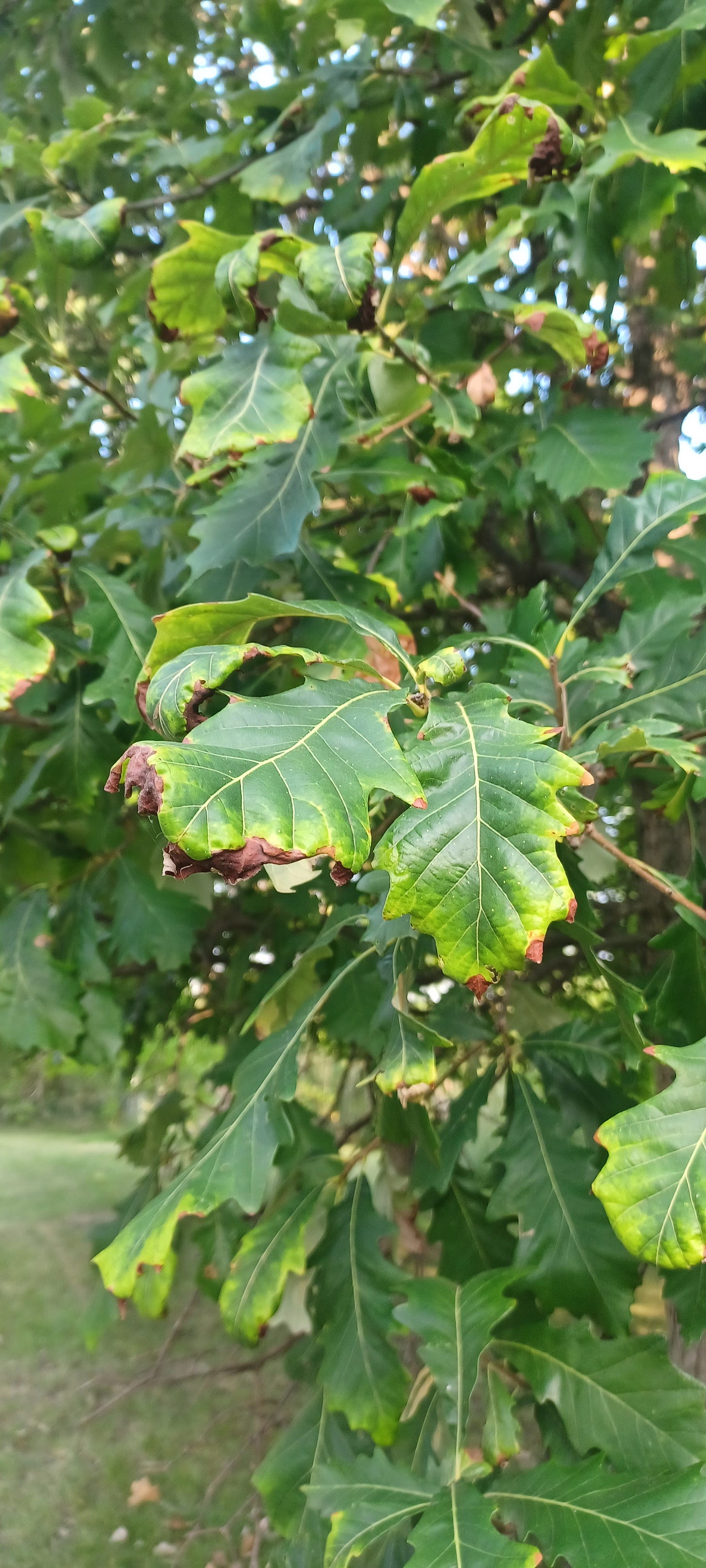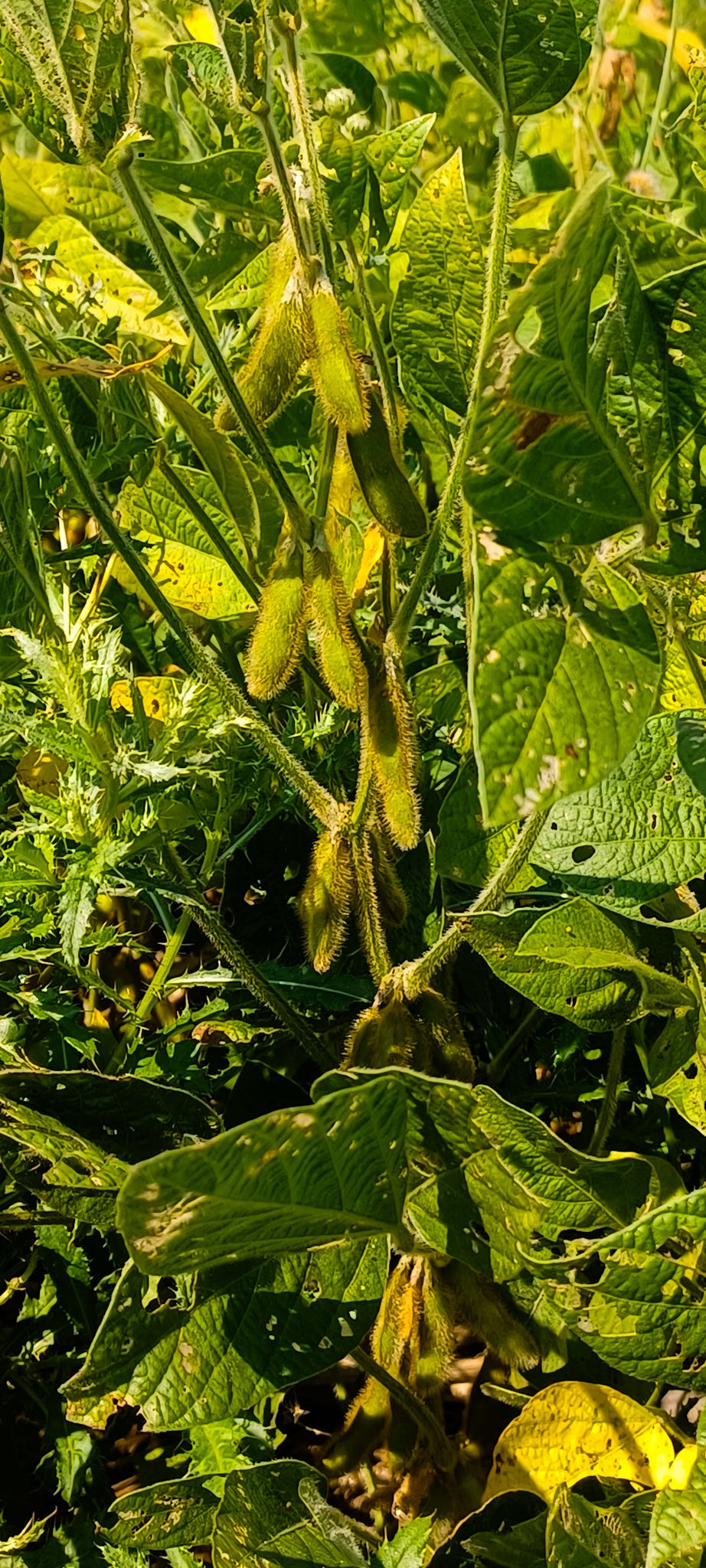This is an essay about pesticide usage in agriculture that I have re-written four or five different times. I have been trying to learn as much about it as I can - and have also been personally affected many times by pesticide drift as a farm worker and a person who lives near farms - since I moved to rural Illinois four years ago.
The difficulty with writing this that I keep running into is that the way we do industrial agriculture in this country is both complicated and connected to many other issues - innumerable rabbit holes to fall down if you’re so inclined. But, as my favorite food writer Alicia Kennedy says, “there’s freedom in acknowledging how complicated how we eat is - and deciding to care anyway!”
You can read this first part of this essay, about how a helicopter crop duster took out a power line next to my house, if you haven’t already at this link.
First, it feels important to say that when it comes to the air we breathe and the water we drink, separation is a fantasy, an illusion. Woe to ye who think this is “just” a Midwest problem - if you are worried about climate change, if you eat food from a grocery store or drink tap water or go outside and pull air into your lungs through your body’s involuntary process of keeping you alive, this is your problem too.
You can’t wall off the outdoors. We have seen this all over the country this year with the horrific wildfires in Canada blanketing many parts of the US in smoke, making it difficult or impossible to be outside safely (and please remember that there are many, many people who do not have a choice in the matter). For some of us, it’s where we work. For some of us, it’s our sanctuary. It’s where we make a living and clear our heads and exercise and play. We deserve clean air, clean water, and a food system that feeds everyone.
Thinking and talking about the pesticide problem can feel really overwhelming. There is so, so much money in agribiz, which is tied up with government at every level. But there are many, many people in and adjacent to agriculture who are actively working on these issues and we should do whatever we can to support them for a just food system - and we should organize ourselves locally. I think there’s a lot of power in pissed off people working together towards a goal. Plus, it’s a Farm Bill year, y’all! We have to strike while the iron is hot. Read on for more info, and/or jump ahead to the resources section at the end for a butt-ton of links for more information and action.
If you’re reading this, I’m going to assume that you know a bit about pesticides already. For example, you may have heard of Monsanto and some of their shady business dealings. You may already know about the plight of the iconic monarch butterfly, whose population fell by over 80% due to its host plant being decimated across its native range (the Iowa skipper butterfly is another). And you may know that glyphosate, the most common chemical used in lawn care (as RoundUp) - which is also sprayed by the hundreds of millions of pounds in agriculture across the US - has been linked non-Hodgkins lymphoma, fertility/birth issues, adolescent health problems, endocrine disruption and is described by the WHO’s cancer research body as a probable carcinogen. If not, you can hover over any of the underlined words to be taken to an informative link. I also encourage you to do your own research.
Dicamba is another herbicide that is commonly sprayed on agricultural monocrops like corn. When conditions are hot and humid, dicamba does something called “volatizing” which basically means it evaporates off its intended target and can blow for miles and miles. This means that there is no way to protect yourself (or the food you grow or the children you’re raising) from it, and that there’s also virtually no way to figure out which farmer is responsible, and therefore no way to hold them accountable. Dicamba poisons the environment in a very visible way: cupped and curled-up leaves are its calling card and they are everywhere in the Midwest. There were over 600 complaints of dicamba damage by farmers in 2019.
The National Institute of Health has linked dicamba exposure to increased risk of liver cancer and lymphoma, among others. In my town, Prairie Rivers Network just released a study showing that even trees in the middle of town, miles away from herbicide spray, are damaged. So we have to ask, if it’s in the tissues of those trees, what does that mean for food grown locally, organically? What does it mean for our bodies?
It’s critical when we talk about industrial agriculture that we actually talk to farmers as well as conservation biologists and cancer researchers. Farmers aren’t gleefully spraying chemicals on the land because they like to. Chemical fertilizers are (expensively) destroying the health of the soil, quietly murdering all of the interstitial and vital microbes and fungi that work together to amount to healthy plant growth, which means they are destroying the long-term economic viability of the person who farms on it.
A huge part of the problem is that in order to be profitable in conventional agriculture you mostly have to plant acres of monocrop: one single plant in straight rows. It is not a coincidence that this kind of growth occurs nowhere else in nature - which is why it requires the upkeep of fertilizers and pesticides. It is really worthwhile to learn about the history of corn in the United States - especially if you’ve ever wondered why corn is in so many products in the grocery store, and what the heck “biofuel” is.
The fact of the matter is that agriculture is a huge driver of the economy in the state of Illinois, which is true for many Midwestern and Central Plains states as well as California. It is not financially feasible for most conventional farmers to transition to organic or to start using regenerative techniques like cover crops and pollinator strips without some kind of major cash money assist - for most, going organic means at least a few years of making no money on their land at all. For context: farmers in 2018 put less money in the bank overall than farmers in 1910 when you adjust for inflation. The margins are often very thin.
However, there are many organizations that are doing incredible work to help make it possible for farmers to make a living through regenerative agriculture. Regenerative agriculture is one of those popular terms whose exact definition gets argued over a lot - I’m using it to mean agriculture that returns health to the land at least as much as it extracts from it. Regenerative agriculture is very often based on indigenous Traditional Ecological Knowledge, and the industry as a whole would do well to keep that at the forefront moving forward - both out of respect for the people who historically stewarded the land before white settlers drained the prairie wetlands and divvied the land into squares, and because that knowledge can help us now.
Some of the regenerative agriculture techniques that are being used include alley cropping (planting alternating rows of different kinds of crops), focusing on perennial plants rather than annuals (which keep carbon in the ground and build the health of the soil, rather than depleting it), and silvopasturing (which combines herd animal grazing and agriculture in the same space for the benefit of both). Kernza is one great example of a perennial grain that can be used instead of wheat. Its roots can reach deeper than ten feet deep, which builds soil, holds carbon, and filters water runoff, in addition to being apparently great in (for example) beer.
These developments make me feel optimistic and hopeful, and also curious and excited about how they will change our plates and palates in the coming years.
So-called commodity crops like corn are heavily subsidized by the federal government - it will take some serious investment in other kinds of crops and ways of farming to make a change like this. “To support [local farms] is a consumer choice, but to not invest in the necessary infrastructure to ensure its survival is a policy choice. To lay the infrastructure for a new generation of farmers to enter the industry and succeed at doing anything but conventional agriculture is a policy choice as well,” says Sam Froiland over at The Land Connection.
Politics and the economy are very, very intertwined when it comes to agriculture and our food systems, but there is an opportunity to make some moves this year that can really have a huge impact on how farming gets practiced for the short-term future. This is a Farm Bill year. The Farm Bill only comes up every five years and it’s one of those lesser known policy bills that can have a really big impact because there is an absolutely enormous amount of money wrapped up in it - which is why it’s also very contentious. The majority of the Farm Bill concerns nutrition programs like SNAP benefits, but it also deals with issues like conservation, crop insurance for farmers, and subsidizing commodity products like corn and soy.
My biggest call to action for this newsletter is that you find an organization that is doing work you care about around the Farm Bill - whether it’s climate change or conservation or supporting farmers or something else related - and support them in some tangible way (that does not need to include money!). Again, a resource list to get you started is below.
The last piece of this issue that I really want to draw your attention to is labor. Agriculture has a huge labor problem. Farm work is often very low paying work without benefits, and it can be difficult to recruit enough people to bring the harvest in. It is objectively extremely necessary, important work that literally feeds people across the country and around the world - and it is extremely physically demanding (I can tell you my own experience with this if you like). It is also one of the jobs that most directly feels the brunt of climate change: extreme heat, wildfire smoke in the air, and few worker protections. And of particular relevance to this newsletter: farm workers are some of the people most likely to experience the horrifying health outcomes of pesticide drift.
As weather becomes increasingly volatile and dangerous due to climate change, we also see legislators ramping up efforts to, for example, limit the number of water breaks workers can take. We should be alert to these efforts and do everything we can to oppose them. A just food system is one where people can make an honest living doing this vital work without risking their health and their lives for the profit of a few people.
This is a lot of information but I sincerely hope that it’s helpful and practical. Please feel free to share any related resources in the comments!
Resources
Pesticides Information/Action
Pesticide Action Network - check out their webinar on pesticides and climate change
Prairie Rivers Network - local to Champaign-Urbana, also doing great regional conservation work
Find their CU tree injury report form here: https://docs.google.com/forms/d/e/1FAIpQLSd3XzHqg-b8orWBEp5nC5H85rnsQfuPZm7QfGOyup4h0HIJnQ/viewform
The EPA’s searchable database of pesticide harm
Investigate Midwest - also has a lot of great reporting on agriculture and conservation
Regenerative Agriculture
Farm Bill
Civil Eats has had some great coverage - they also report on food and farming
Modern Farmer on demystifying the Farm Bill
Racial disparities in water access
Labor
United Farm Workers Foundation
Alianza Agricola - immigrant farm workers organizing in NY
Conservation
Natural Resources Defense Council
Center for Biological Diversity
Miscellaneous, of interest
These articles on Monsanto’s work to undermine the cancer research organization that found glyphosate to be a probable carcinogen are extremely worthwhile.
Skywoman - work being done on food sovereignty based in Virginia
Poor Prole's Almanac - I have learned so, so much from this incredible resource and linked to their episode on the history of corn above
I also just really appreciated this article on climate optimism
As always, thanks for being here.







